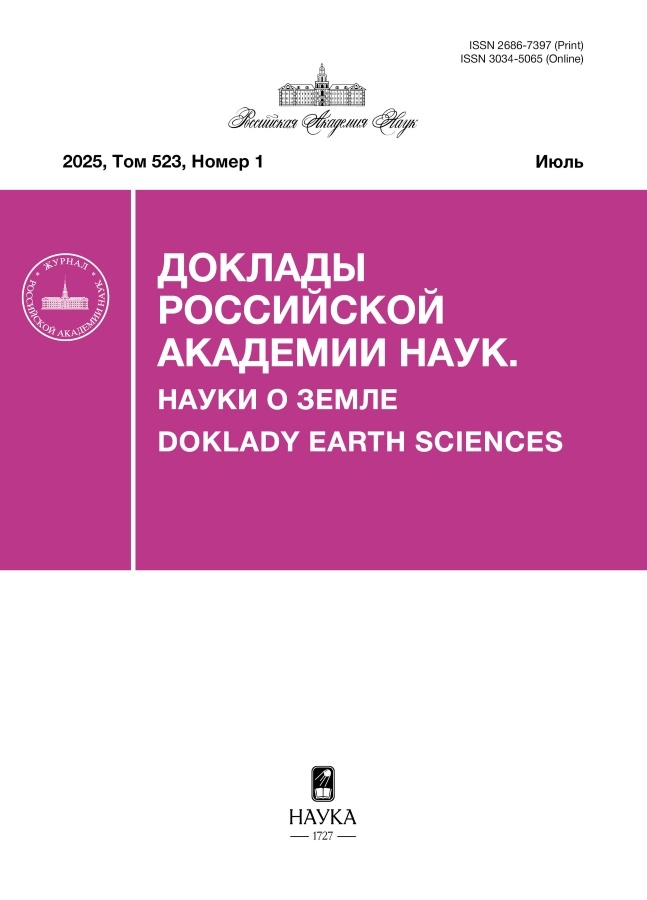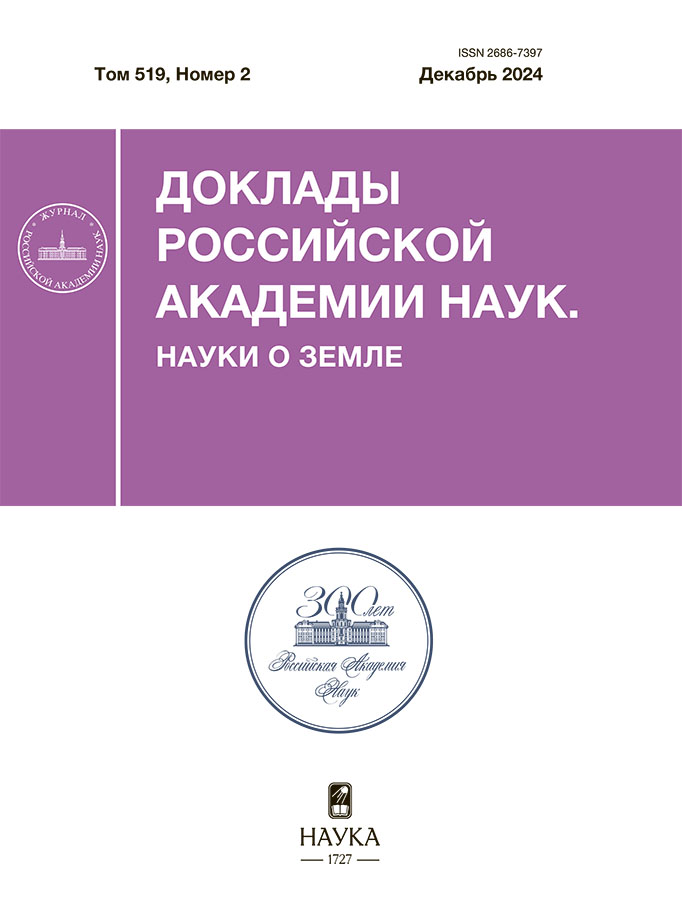Сейсмотектоническая модель очага землетрясения Акетао 25.11.2016 Mw 6.6 (Китай)
- Авторы: Морозов В.Н.1, Маневич А.И.1,2
-
Учреждения:
- Геофизический центр РАН
- Горный институт НИТУ МИСИС
- Выпуск: Том 519, № 2 (2024)
- Страницы: 120-127
- Раздел: СЕЙСМОЛОГИЯ
- Статья получена: 04.06.2025
- Статья опубликована: 28.12.2024
- URL: https://edgccjournal.org/2686-7397/article/view/682457
- DOI: https://doi.org/10.31857/S2686739724120155
- ID: 682457
Цитировать
Полный текст
Аннотация
Изложены результаты моделирования напряженно-деформированного состояния эпицентральной зоны сильного корового землетрясения Акетао, произошедшего в районе г. Мудзи (Китай) 25 ноября 2016 года с магнитудой Mw 6.6. Использован метод конечных элементов для моделирования напряженно-деформированного состояния эпицентральной зоны с последующим построением карт интенсивности напряжений до и после землетрясения. Показана возможность определения места зарождения разрыва, его протяженности, включая оценку величины скалярного сейсмического момента и магнитуды землетрясения. Впервые представлена возможность вычисления временной функции сейсмического момента Mo (t) (seismic moment rate), основанная на модели напряженно-деформированного состояния разрыва (очага землетрясения), позволяющая в перспективе получить синтетические сейсмограммы и акселелограммы возможного землетрясения.
Полный текст
Об авторах
В. Н. Морозов
Геофизический центр РАН
Email: a.manevich@gcras.ru
Россия, Москва
А. И. Маневич
Геофизический центр РАН; Горный институт НИТУ МИСИС
Автор, ответственный за переписку.
Email: a.manevich@gcras.ru
Россия, Москва; Москва
Список литературы
- Морозов В. Н., Татаринов В. Н., Колесников И. Ю., Маневич А. И. Моделирование напряженно-деформированного состояния эпицентральной зоны сильного землетрясения в Иране (26 декабря 2003 г. Mw = 6.6) // Физика Земли. 2018. № 4. С. 68–78. http://doi.org/10.1134/S0002333718040087
- Морозов В. Н., Татаринов В. Н., Маневич А. И. Моделирование напряженно-деформированного состояния эпицентральной зоны сильного землетрясения в Турции (Измит, 1999 г., М 7.4) // Вулканология и сейсмология. 2020. № 2. С. 43–54. http://doi.org/10.31857/S0203030620020042
- Морозов В. Н., Маневич А. И., Татаринов В. Н. Ретроспективный прогноз места и интенсивности двух сильных коровых землетрясений в Иране и Индии // Вулканология и сейсмология. 2023. № 3. С. 69–78.http://doi.org/10.31857/S020303062370013X
- Ризниченко Ю. В. Размеры очага корового землетрясения и сейсмический момент // Исследования по физике землетрясений. М.: Наука, 1976. С. 9–27.
- Kanamori H., Brodsky E. E. The physics of earthquakes // Reports on Progress in Physics. 2004. V. 67(8). P. 1429–1496.http://doi.org/10.1088/00344885/67/8/R03
- Li J., Liu G., Qiao X., Xiong W., Wang X., Liu D., Sun J., Yushan A., Yusan S., Fang W., Wang Q. Rupture characteristics of the 25 November 2016 Aketao earthquake ( 6.6) in Eastern Pamir revealed by GPS and teleseismic data // Pure and Applied Geophysics. 2018. V. 175. P. 573–585.http://doi.org/10.1007/s00024-018-1798-9
- Feng W., Tian Y., Zhang Y., Samsonov S., Almeida R., Liu P. A slip gap of the 2016 6.6 Muji, Xinjiang, China, earthquake inferred from Sentinel‐1 TOPS interferometry // Seismological Research Letters. 2017. V. 88(4). P. 1054–1064.http://doi.org/10.1785/0220170019
- Wang S., Xu C., Wen Y., Yin Z., Jiang G., Fang L. Slip Model for the 25 November 2016 6.6 Aketao Earthquake, Western China, revealed by Sentinel-1 and ALOS-2 Observations // Remote Sensing. 2017. V. 9(4). Iss. 325.http://doi.org/10.3390/rs9040325
- Ma Y., Qiao X., Chen W., Zhou Y. Source model of 2016 6.6 Aketao earthquake, Xinjiang derived from Sentinel-1 InSAR observation // Geodesy and Geodynamics. 2018. V. 9. Iss. 5. P. 372–377.http://doi.org/10.1016/j.geog.2018.05.001
- Li T., Schoenbohm L. M., Chen J., Yuan Z., Feng W., Li W., Xu J., Owen L. A., Sobel E. R., Zhang B., Zheng B., Zhang P. Cumulative and coseismic (during the 2016 6.6 Aketao earthquake) deformation of the dextral-slip Muji fault, Northeastern Pamir orogen // Tectonics. 2019. V. 38. Iss. 11. P. 3975–3989. http://doi.org/10.1029/2019TC005680
- Anderson D. L., Witcomb J. H. The Dilatancy-diffusion model of earthquake prediction / Proc. Conf. of tectonic problems of the San Andreas fault systems. Stanf. Univ. Publ., 1973. XIII. P. 417.
- Kanamori H., Anderson L. Theoretical basis of some empirical relations in seismology // Bulletin of the Seismological Society of America. 1975. V. 65(5). P. 1073–1095.http://doi.org/10.1785/BSSA0650051073
- Kanamori H. The energy in great earthquakes // Journal of geophysical research. 1977. V. 82. № 20. P. 2981–2987.http://doi.org/10.1029/JB082i20p02981
Дополнительные файлы
















